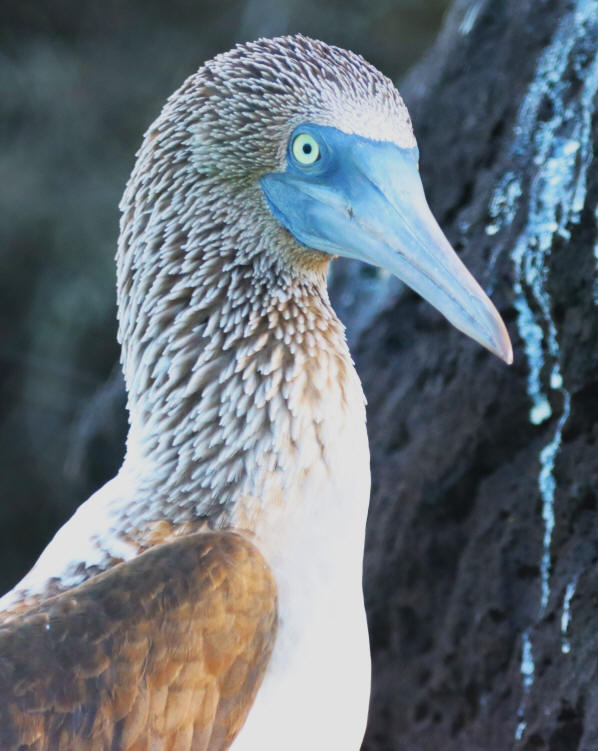We did what's called a "wet landing" which means your feet are going in the water (some of the landings are "dry" meaning you get off the Panga at a dock). It was on a small beach in the pristine turquiose Barrington Bay on the northeast side of the island


On the way in, we were introduced to a number of inhabitants of the islands that we would end up seeing again (and again and again), but it never got old; you were so close, the only think that kept you from touching the animals was the guides saying, "don't touch the animals."
 Blue footed Boobie |
The blue feet of the Blue Footed Boobie |
|
The Sally Lightfoot Crab, an iconic Galapagos inhabitant |
 Manta rays cruising the bay |
Pelicans were fairly common everywhere we went
On the island, there were dozens of sea lions, mostly snoozing in the sun, but here and there a few rolling in the waves or hollering for attention. They look and act so much like dogs, you feel like you should pet them and tell them they are a good sea lion, but the guides were pretty much adamant about not doing that.
 |
 |
We hiked farther inland, which provided an opportunity to see a number of interesting plants and animals. Sadly, the land tortoises native to Santa Fe were wiped out by whaling vessels in the 1800s, and while there have been small releases of a substitute species of tortoise, there aren't many of them and we did not see one.
The coolest thing wasn't the Santa Fe Land Iguana (although they were also interesting), it was the massive Santa Fe Opuntia cactus, which were particular picturesque when the backdrop was the rugged lava seaside of the island. But we also saw the small but colorful Lava Lizard, with the females sporting a brilliant red throat, brush covered in lichen (there are four varieties of lichen found only in the Galapagos, although the most distinctive is the hanging species of Usnea, which in some places completely covered the brush they were growing on), and a number of birds including the mockingbird shown below.
 |
|
 |
|
|
|
 |
Then it was back on the Panga and the Infinity for the traverse to South Plazas Island. Even on the Infinity, there were often incredible sights; that day there was a dog fight between two frigate birds and a swallow tailed gull; apparently the frigate birds are not good hunters and are frequently trying to snatch the food captured by their more agile counterparts.
 |
South plaza island is south of North Plaza island ... which certainly makes sense. It's small an unihabited (by humans) island and has the largest land iguana population of any of the places you can visit (but that doesn't hold a candle to the sea iguana colonies, which are ginormous). We landed at a stone quay that was right in the middle of a swallow tailed gull nesting ground, and were once again surprised by how little the birds cared about being surrounded by people; even those with eggs and chicks did little more than squawk a bit when you approached them.
|
The chick & the egg and mom voicing a complaint |
|
The colorful land iquana, and off the coast some rays doing ... something that involves a lot of splashing |
 |

more Sally Lightfoots ... but how can you not take pictures of them? Digging the purple eyes.
Then it was back to the Infinity for dinner and bed while the ship made it's way to nearby Santa Cruz Island for the start of day 3.